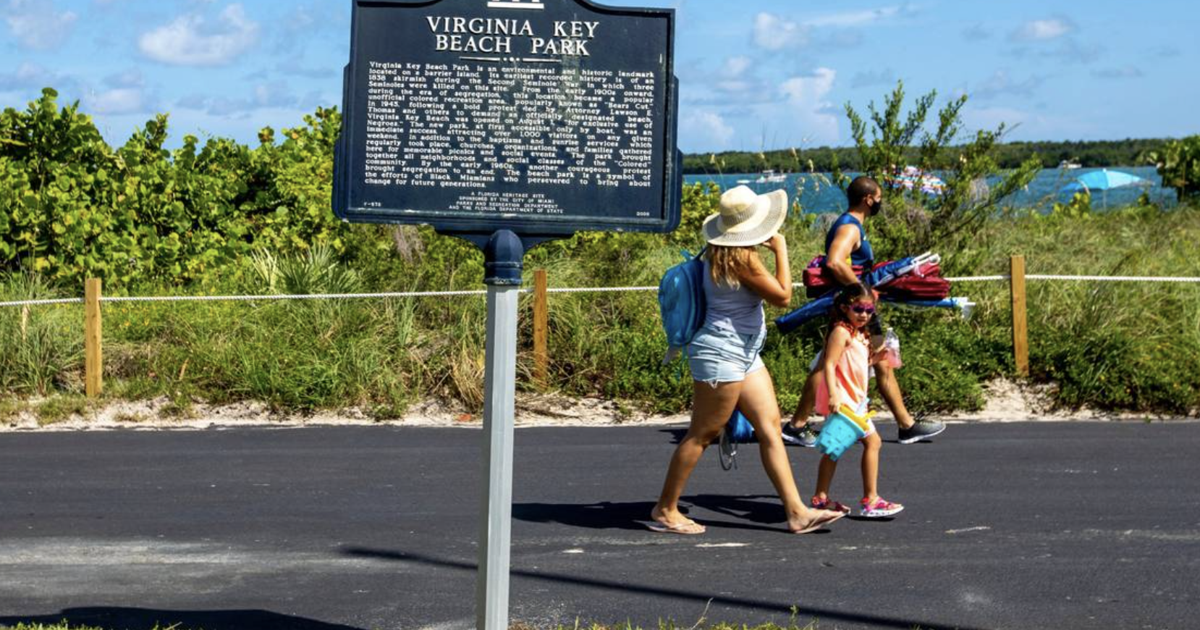“It is our intent to analyze the staff and budget,” Miami gives additional funds to support effort to upgrade Virginia Key Beach Park | Miami

After much debate and public persuasion, City of Miami Commissioners at this week’s second (and final) Budget Hearing approved the annual budget of the Virginia Key Beach Park Trust in the amount of $1,630,000 and kept the nine-member Board intact — pending an auditor general’s final report — for the fiscal year commencing Oct. 1.
The total included the customary $300,000 issued in the past few years, plus an additional $300,000 requested by the Trust for five more positions — four of those park rangers to support the 82-acre environmental gem off the Rickenbacker Causeway.
The vote went 3-2 with Alex Diaz de la Portilla and Joe Carollo voting “no” after questioning the number of employees, the “excessive” salaries already in place, and the lack of overall progress toward the bottom-line effort to build a historic museum to honor Miami’s African-American community on the nearby site of the once-segregated beach.
Carollo, who wanted commissioners to take charge of the Trust, instead indicated that after three years — on any Trust board in the city — if no significant progress is made, or any improprieties are uncovered, it would be grounds for the removal of the entire board.
Board of Commissioners Chair Christine King, whose request had been accepted in the previous meeting to oversee the Virginia Key Historical Trust Board and try to improve its direction and management for one year, led the “yes” votes with Ken Russell and Manolo Reyes following suit.
Ten members of the community spoke, including current Virginia Key Beach Park Trust Chairman Patrick Range II, the grandson of the late M. Athalie Range, the founding chair of the Virginia Key Beach Park Trust and Miami’s first African-American commissioner.
Range told commissioners he lacked support from the City or the Commission, even trying to get a build item on the agenda.
“We talked (earlier) about self-sustaining,” Range said. “Between 2009 and 2016, the Trust received zero dollars from the City of Miami … (but) that was the result of the real estate fallout and the City was not in position to fund the Trust, and so we had to re-calibrate the $1.3 million (we received) in 2008-09 to zero. We had to manufacture the monies to operate the park and, guess what, we did that.”
The funding started anew in 2016-17 with a $150,000 allocation to ramp up the request for the museum.
“Unfortunately, no personnel nor financial contributions have come from the Parks Department, even though we’re the largest park … Nevertheless, we’ve been able to sustain ourselves,” Range said.
Commissioner de la Portilla questioned how $859,000 in total salaries for what would be, eventually, 23 employees could comprise most of the original $1,330,000 budget (before the additional $300,000 was approved, none of which was tied to the museum).
“So, we’re looking at about 64% of your budget going to salaries. Do you see anything wrong with that?” asked de la Portilla. “That kind of overhead is absurd. Voting for that would be malfeasance on my part,” using a word that was tossed around by commissioners at the Sept. 13 meeting when the subject was first discussed – something that Range vehemently denied Thursday night.
But, de la Portilla offered another avenue, saying he would take $150,000 from his office budget and asked other commissioners if they would do the same just to get the museum project going. “I want to build it, but I don’t want to pay salaries,” he said.
And, since the $300,000 would come from “uncollected” reserves, which the City has accumulated $8 million, de la Portilla simply asked, “Why don’t we just take $2 million out of that and build the museum (now)?”
Neither of those solutions were agreed upon.
King, however, agreed with Reyes that transparency will be vital.
“It is our intent to analyze the staff and budget,” she said. “Mr. Range himself even said perhaps ‘we can do better with salaries and staff.’ “
Carollo, who offered a number of potential ways to boost revenues — and tourism — to the beach park that provides a beautiful vantage point of the city, wanted to be in position to make decisions himself, but said he will work with Range and his staff to see if such amenities as the “choo-choo” train and antique carousel could be a strong part of the drawing card.
But, he also was taken aback at how it takes 23 employees to oversee 82 acres (including some hard-to-approach mangroves and beachfront), while at Bayfront Park, the city’s other gem, “we have 11 people — five maintenance, five full-time and one part-time — for 60 acres.
“I don’t see why you need (23) … I’m embarrassed to say you have twice more and (probably, in some cases) making $40-$45,000 more … that is what I’m basing my opinion on.”
Range said he wasn’t allowed to discuss an ongoing audit but wanted to address allegations and misinformation from the Sept. 13 City Commission meeting, when words like “malfeasance” and “fiscal irresponsibility” were used.
He pointed out that in November 2004, Miami-Dade County voters approved GO Bond money to build a museum “for the immigrant experience.”
He said, despite what some still refer to the area as “Black Beach” or “Colored Beach,” which, “in fact, it was in the segregation days, but the fact is this 82-acre park, the largest in the City of Miami proper, is used by more people who don’t look like me.
“This year, we’ve had 100,000 (visitors) pass through the park, and they come from your districts. We keep it clean, keep it safe, and open to all. This is not ‘Blacks Park’ or ‘Blacks Beach’ … we have some of the most beautiful vistas … people clamoring for photo shoots, and weddings. We have accomplished all aspects of the master plan from 2006 except the building of the museum.”
Also pleading their case were veteran community members Dr. Enid Curtis Pinkney and Dr. Dorothy Jenkins Fields, now a historian, who were there when the Trust was created in 1999 following the establishment of the Virginia Key Beach Park Civil Rights Task Force in June, which was a direct response by the community opposing private development on the beach park.
The City of Miami Commission then decided to create the now Virginia Key Beach Park Trust to oversee the development of the historic beach park property where members have made countless improvements, replacing features such as a dance hall that thrived during segregation, and reopening the park to the public, while protecting the shoreline.
Dr. Pinkney said her family has lived in Miami since 1910 and she has seen “much racial discrimination and prejudice” over the years. She said there was a time “you had to be afraid of white people if you didn’t do what they said. Prior to 1945, there was nowhere a Black person could go to the beach around here, except for this Virginia Key area.
“In 1999, we were told that the City (of Miami) wanted to turn the beach into an eco-tourist camp, whatever that is, and we were told that developers wanted to put up a hotel there. Some of us continued to believe the developers are (still) stimulating the problems,” she said, pointing out, for example, a big development in Overtown — without the homeless — “would make money off the back of Black history.
“If you’re following their lead, we are definitely in trouble,” she told commissioners. “… you’re disrespecting Black history. I feel we are moving backwards, going in the wrong direction. I was on the (Virginia Key) committee before it became a Trust. … Black people have a hard time (today) getting things done in Miami. Ask me, I know,” she said, urging commissioners to use “God’s wisdom, and to be fair and respect everybody.”
Others pointed out a museum would honor the pioneering laborers who built this city “on their backs.”
Another resident, George Simpson, said when he attended Christopher Columbus High, he was the first Black student there — and still was the only one all four years.
“All these kids (on weekends) would go to all these (different) beaches,” he said. “There was only one beach I could go to and that was Virginia Key Beach, and it was very nice … I also had a band, and we’d play there, and white kids would come Friday and Saturday nights … the point is … we knew that beach was special, the waves were the right height. That beach has a rich history and everyone goes there (today).”
Another speaker, Lourdes Cabrera, said she came to support the current Board of Trustees.
“I’ve heard a lot about resiliency tonight,” she said, alluding to several people who pleaded with commissioners to include a separate resiliency department to help protect the city against climate change. “You know who’s resilient? That committee. They’ve created a historic bond from generation to generation.
“It’s unfair to erase that Board, because they’ve done so much. Let’s keep something historic for all of us … and future generations.”
Before the vote took place, Range told commissioners: “This is not about me … no matter how you move (on) it, I’m here (to support the building of a Black Heritage museum and the preservation of the land).
“It’s the most beautiful piece of dirt we have in this city.”
For more information on Virginia Key Beach Park and its history, click here.


